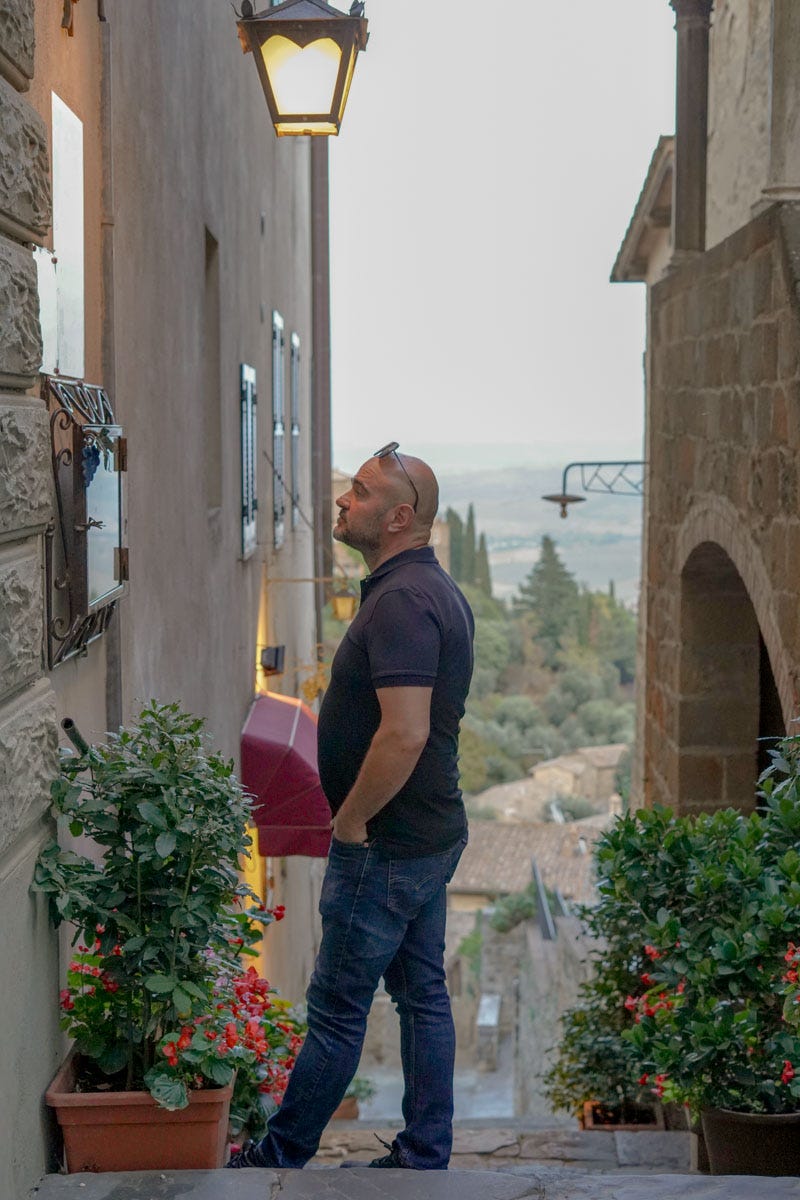Don't Dip your Bread in Olive Oil
And other things to avoid when dining a a restaurant in Italy, + how to order coffee in a bar + where to escape the crowds in Rome.
On our first evening back in Montalcino, we decided to have dinner at Taverna Grappolo Blu, a place we’ve been to before. The menu features classic Tuscan dishes, the wine list is respectable, and the atmosphere is casual and friendly.
As we walked in, we noted that the restaurant was busy, with both the front room and the back room nearly full. We were seated in the front room, which was perfectly fine, but caused Stefano to wonder, “I wonder what it takes to get a table in the back room?”
The owner, Luciano, recognized us and stopped by our table to chat. Luciano is originally from Rome, so he and Stefano hit it off. We talked about Rome, Montalcino, wines, the restaurant business, and our kids until our food arrived.
A few nights later, we stopped by again for dinner. The waiter was about to seat us in the front room, but Luciano, having spotted us, interjected and gestured to a table in the back room, near the bar and the kitchen. We smiled - we were insiders now.
It was midweek and quieter at the restaurant. From our table, we had a unique view of the tavern’s operations. At one point, the waiter returned from the front room with a look of consternation. He had just brought a basket of bread to a table of diners, tourists visiting Montalcino, and they had insisted that he return with olive oil and balsamic vinegar to dip the bread in. Despite being a common practice at Italian restaurants in the US and perhaps in other countries, dipping bread in olive oil and balsamic vinegar is not a thing in Italy.
Chatting with Luciano and the waiter, we had a laugh about that and the other practices and expectations of tourists who dine in Italian restaurants. Sadly, what is considered “Italian” in other countries is often an exageration of actual culinary traditions, or in some cases, is a complete falsehood.
How is an unsuspecting visitor to Italy to know, though? To help, we’ve put together a cheat sheet:
5 Things NOT to Do When Dining in an Italian Restaurant
Ask for olive oil and balsamic vinegar for dipping your bread. In Italy, bread might be served with olive oil drizzed on it, as in a bruschetta, or bread may be used to soak up the remaining sauce from your first or second course (called fare la scarpetta in Italian), but restaurants do not bring you olive oil and balsamic vinegar to dip your bread in, except those restaurants that have given up and caved to the demands of American tourists. If you request it they may oblige, but in private they will roll their eyes.
Order an Aperol Spritz with your meal. The Aperol Spritz craze is completely out of control. Everywhere we went, at all times of the day, people were sitting at tables drinking Aperol Spritzes. On our morning walks, we observed delivery trucks dropping of cases and cases of Aperol to bars and restaurants around Rome. Once we spotted “Aperol Spritz To Go” written (in English) on a sidewalk sandwich board outside a venue. Good heavens. The spritz has its place - it’s light, refreshing, and intended as an aperitivo, a pre-dinner drink served with light appetizers. The word aperitivo derives from Latin aperire which means “to open.” An aperitivo is meant to open, or stimulate your appetite, as aptly described in this blog post. By all means, order an Aperol Spritz for a late-afternoon aperitivo and enjoy it with some potato chips and other savory finger food. But with dinner, skip the spritz and order wine, instead.
Expect Parmigiano Reggiano on all of your pasta. Contrary to what many Italian restaurants outside of Italy have conditioned us to believe, Parmigiano does not belong on all pasta dishes. Some, such as Rome’s four quintessential pastas, call for Pecorino Romano, not Parmigiano. Sometimes the Parmigiano Reggiano or Pecorino Romano has already been added to the pasta, with no need to dump additional on top. Certain pastas, notably seafood dishes, do not call for Parmigiano. We’ve observed tourists who feel disrespected for not being offered Parmigiano Reggiano at their table. Their sentiment is often misdirected. Good restaurants take pride in their food and will serve dishes prepared the way they are intended. If you would like Parmigiano Reggiano or wonder if it goes with the pasta you are ordering, go ahead and ask. Just be respectful and don’t presume you know more than they do about how the food should be served.
Ask for a to-go box. It’s very uncommon to ask to take restaurant food that advances home with you. Portion sizes in Italian restaurants are reasonable, and menus are organized by appetizers, first courses, second courses, and side dishes, allowing you to order in accordance with your appetite. Not finishing your meal is interpreted as not enjoying the food, so if there are left-overs, be sure to mention to the waiter that the meal was delicious but you were simply too full to finish it. Interestingly, to combat food waste, the city of Rome has recently launched a “doggy bag” initiative whereby participating restaurants will receive recyclable to-go containers and signage to display indicating that they participate in the initiative. It will be interesting to see if this changes the habits of Italian diners.
Order a cappuccino after lunch or dinner. It’s common for the waiter to offer a coffee at the end of a meal, but this will be an espresso, not a coffee drink with milk. In Italy, cappuccino is a breakfast drink only. There are varying opinions on why this is, some maintaining it is just a custom, while others arguing that cappuccino, made with whole milk, it too heavy of a drink for after a meal. View this as you wish, but know that asking for a cappuccino after a meal, or any time in the afternoon or evening, is a very un-Italian thing to do. We observed a tourist in Rome drinking a cappuccino and munching on potato chips at about 4pm. He definitely garnered some shocked looks.
In conclusion, when you visit Italy, don’t make assumptions, observe what the locals do, ask if you are unsure, and respect local food traditions. Afterall, you are there for an authentic experience, right?
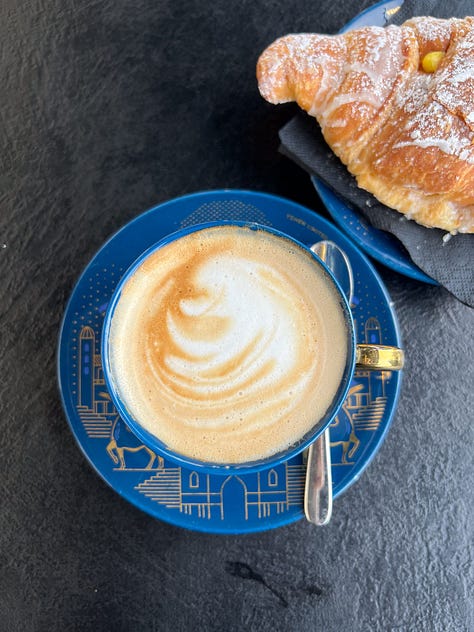
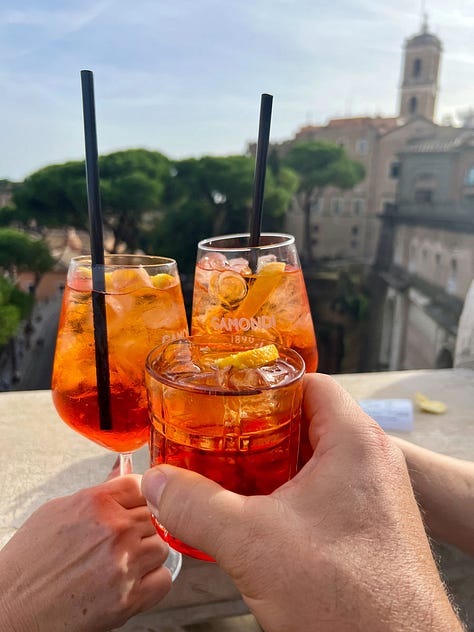

How to Order Coffee at an Italian Bar
The Italian Bar is a one-stop shop for coffee drinks, tea, fruit juice, soft drinks, and cocktails, wine and beer. In the morning, the bar serves breakfast pastries, while for lunch into the afternoon and evening you can enjoy sandwiches, pizza, and sometimes even salads and pasta.
Based on our observations, visitors to Italy have the most difficulty ordering coffee, however, since Italian coffee culture differs from that in America and other countries outside of Italy. Here’s some advice to help you navigate it.
Italian Coffee Drinks
Caffè. A caffè is an espresso, but don’t call it that. Ask for a caffè. Served in an espresso cup, it only comes with one-shot, but you can ask the barista to make it lungo, which is a longer pull made with more water, or ristretto, which is a shorter pull that yields a more intense coffee. An espresso is often served with a small glass of water, meant to cleanse your palate after you’ve finished.
Caffè Macchiato. A caffè macchiato is an espresso with a splash of milk.
Cappuccino. Made of equal parts espresso, steamed milk and milk foam, cappuccino is a classic breakfast drink typically ordered in the morning only, and not after noon. Whole milk is used by default, although some bars have non-dairy milk alternatives upon request. Etiquette tip: don’t lick the spoon after you’ve stirred your cappuccino.
Caffè Latte. A caffè latte has more milk than espresso, and less foam. It is a breakfast drink only. Don’t expect flavored coffee - that is a Starbucks invention and very un-Italian.
Caffè Freddo. In Italy’s hot summers, bars will keep chilled caffè freddo ready for its customers. Pre-sweetened with sugar, caffè freddo is pretty sweet. Unlike the iced coffees we are used to in the US, caffè freddo is served chilled but never on ice.
Caffè Americano. If you are craving a large mug of black coffee like you would drink at home, try ordering a caffè Americano, which is espresso diluted with hot water.
Caffè Corretto. Literally a “corrected” coffee, caffè corretto is an espresso with a splash of your favorite liquor, perhaps stravecchio (brandy), grappa, sambuca or even Bailey’s Irish Cream. When you order it, let the barista know what you want your espresso corrected with. For example, caffe corretto con grappa. If you just ask for a caffè corretto, the barista will ask you, “corretto con che cosa?” (corrected with what?).
Entering and exiting the bar
A lovely aspect of Italian culture is the practice of greeting each other when you enter and exit an establishment. When you walk into a bar, if it’s not crowded, smile and say “buongiorno” or “buona sera.” When you leave, whether it is crowded or not, be sure to say “grazie, arrivederci” or “grazie, buongiorno / buonasera.” If no-one is paying attention to you, just smile and direct your salutation toward the staff. That’s still more polite than walking out in silence.
Pay before or after ordering?
Most often, you should pay first. Approach the cash register, tell the cashier your order, and pay. The cashier will issue you a receipt, which you can then present to the barista. If it’s busy and you don’t have the barista’s attention, just set the receipt on the bar to show that you’ve paid, and when he or she turns in your direction, smile and state your order.
Stand or sit?
Coffee is usually consumed standing at the the bar. It’s a snappy process: order your coffee, consume it quickly, thank the barista, and go about your day. If you’d rather take your time and linger, then ask to be seated at a table. Always ask at the register first, don’t just sit down. Sitting at a table means that the bar staff will take your order, serve you your coffee and any food you order, and clean up when you leave. For this reason, table service costs more.
When it’s crowded?
Certain times of the day, especially during the morning rush, bars are very busy. You may need to wait for space at the bar and be a bit assertive to get your order placed. Watch the barista, try to make eye contact, and if needed use a louder but friendly voice to place your order, always ending with per favore.
Can I take my coffee to go?
In general, Italians do not take their coffee to go. The exception is if an employee or the owner of a nearby business buys caffè to take back to colleagues or clients. However, Italians don’t stroll down the street drinking a cappuccino or a caffè latte. Due to the demand from Americans and other tourists for coffee to go, bars are starting to offering coffee drinks in take-away cups. The Italian way to do it, though, is to pause for a moment and enjoy your coffee at the bar.
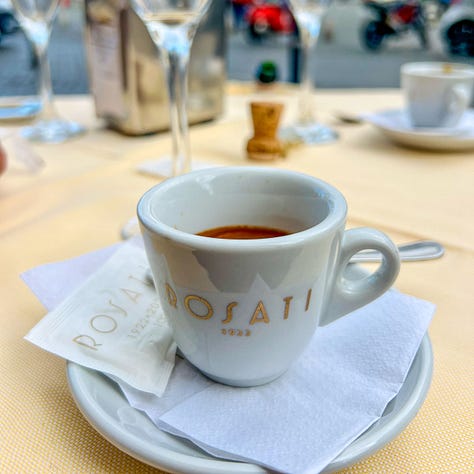
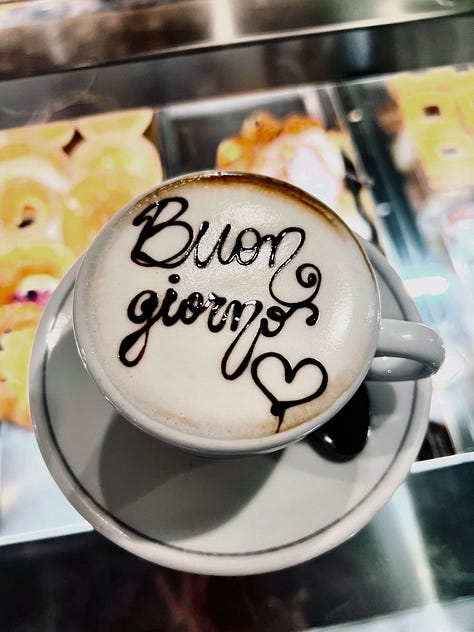
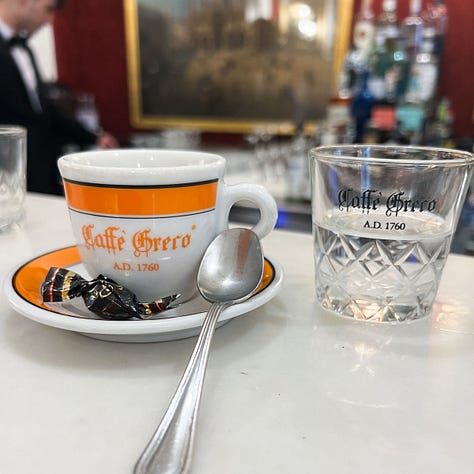
Five Places to Escape the Crowds in Rome
Rome is amazing. The problem is that too many others agree. According to Wikipedia, Rome is the second-most visited city in Europe, after Paris, with an average of 7–10 million tourists each year. In a city with 5 million inhabitants of its own, that’s a lot of people.
Here are five fantastic spots right in the heart of the city to escape to when the crowds get to be too much and you need a little breathing room.
Villa Borghese
Rome’s equivalent to New York City’s Central Park, Villa Borghese is a public park spread over 80 hectares/148 acres featuring gardens, fountains, statues, a small lake, a temple a sundial, and more. It is also home to the Borghese Gallery which houses works of art by Bernini, Caravaccio, Raphael and others. It’s a lovely place to take a stroll, and the views from Pincio, a terrace on the western edge of the park, are spectacular.
Baths of Caracalla
Terme di Caracalla in Italian, these public baths were built between AD 212 and 216 across 25 hectares/60 acres and remained in use until the 6th century, accommodating up to 1,600 bathers at a time and up to 7,000 per day. Adorned with mosiacs and statues and featuring cold, warm and hot pools, the baths were symbolic of the grandeur and opulence of Roman imperial age. Today, the ruins are a fascinating and peaceful place to visit.
Churches and Basilicas
There are an estimated 900 churches and basilicas in Rome. Aside from a few of the most famous, including Saint Peter’s Basilica at the Vatican, Rome’s churches and basilicas are open to the public, free, quiet, and relatively uncrowded. As a bonus in the hot summer months, they are also. naturally cool. You can plan an itinerary if you wish, or just do as we do - pop in every time you come upon one and take a moment to enjoy the silence and admire the art and architecture. Sometimes you may stumble upon something remarkable, such as the Caravaggio in the Church of Saint Louis of the French, nestled between the Pantheon and Piazza Navona.
Rooftop Bars
When the street-level crowds get to be too much, we often plan a stop at a roof top bar to catch our breath and enjoy the views of Rome from above. We’ve compiled a list of our favorite rooftops, but more are popping up all the time, usually atop of hotels. One that is not on our list is at Hotel Fontana, located right across the street from the Trevi Fountain. The rooftop lounge is a small, enclosed space with limited bar offerings, and there is a per person entrance fee that is subsequently deducted from your order, but it offers an amazing view of the fountain that can’t be had amidst the crowds below.
Panoramic Terrace at the Altar of the Patria
The panoramic terrace top of the Altar of the Patria is another way to rise above the crowds, literally, and view Rome from above. Referred to as the “typewriter” and the “wedding cake” by locals, the Altar of the Patria has never been among Rome’s most loved monuments, but that is beginning to change since the opening of the terrace. To access it, you first have to climb 243 steps to get to the main entrance to the monument, and from there, buy a ticket and take an elevator up 11 more meters to the terrace. Once there, you enjoy unparalled views of the entire city of Rome.
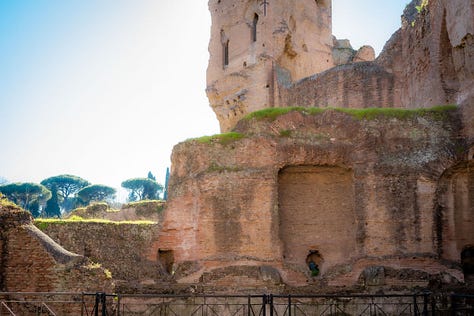
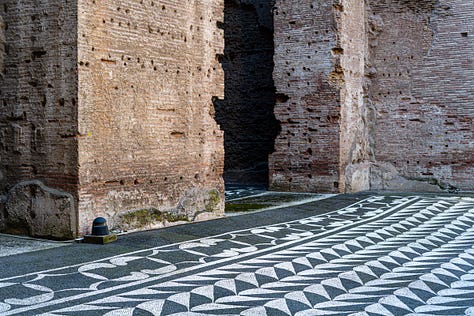
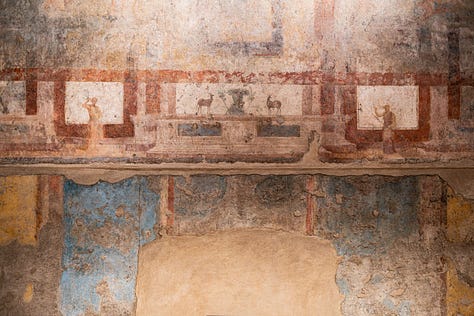
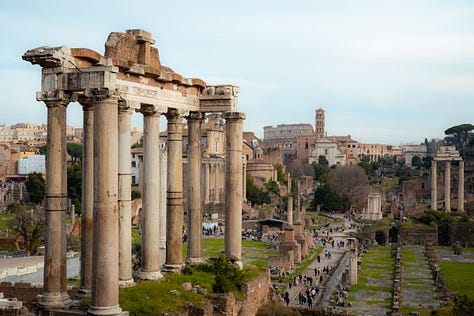
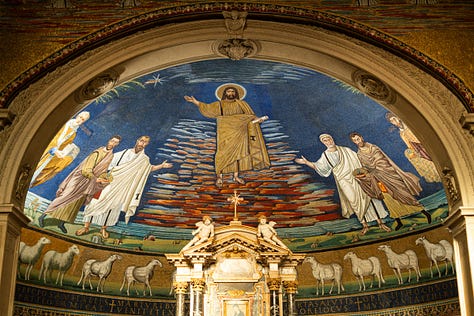
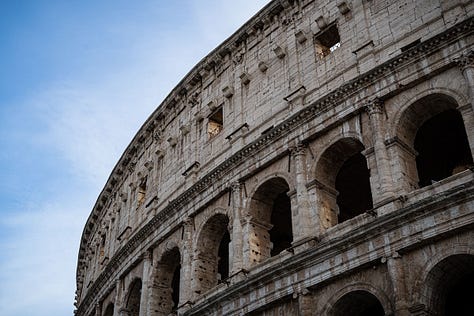
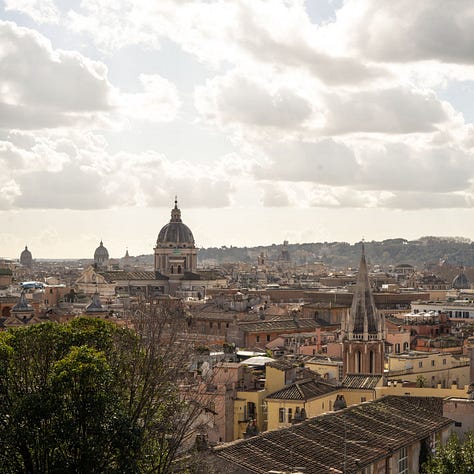
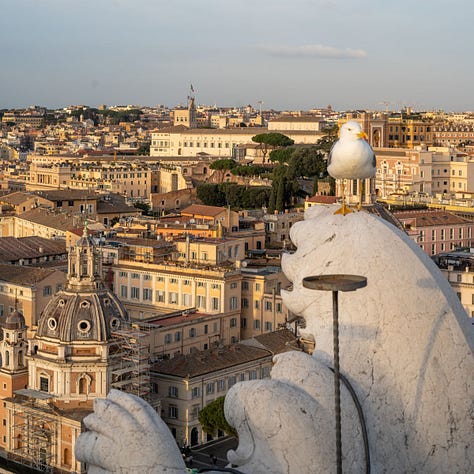
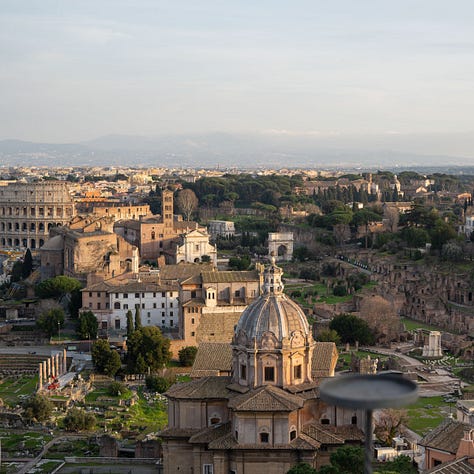
The Montalcino House
Stay tuned for next week’s newsletter, where we explain what we found during the final walkthrough of the house and reveal if whether we closed on the property or not.





